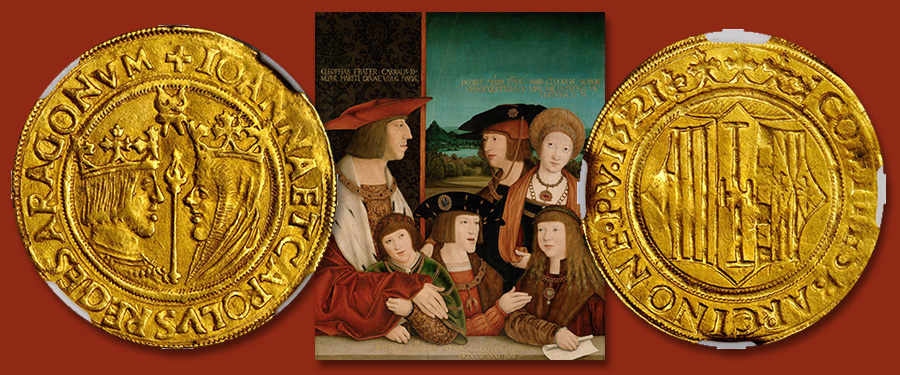
The rise in power and prestige of the Habsburg dynasty in Austria during the 14th and 15th centuries created the possibility for more advantageous marriages and, as a result, political alliances. The first from the family to become Holy Roman Emperor, Maximilian I secured a pivotal marriage with Mary "the Rich," her father being the duke of Burgundy, Charles "the Bold." This Burgundian realm—mostly corresponding to modern-day Belgium and northeastern France—was a territory primed for dispute between France and the Holy Roman Empire. Upon the rather early death of Charles, his lands mostly passed to daughter Mary, adding another important fiefdom into the growing portfolio of the Habsburgs. Accordingly, the son of Maximilian and Mary—Philip "the Handsome"—was in line to amass not only the holdings of his father, but also those to the west from his mother. Yet another important marriage, this time for Philip, seemingly assured even greater power, as he was betrothed to Joanna of Castile—the daughter of the famous Ferdinand (of Aragon) and Isabella (of Castile). This union was sadly quite brief, as Philip died just 10 years into the marriage, reportedly of typhoid fever in Burgos. Joanna, deeply distraught, would spend the remainder of her life relatively incapacitated due to the grief of losing her husband. The union did, however, produce numerous issues (two boys and four girls), with all of them surviving to fulfill regal roles in Europe. Undoubtedly, the most well known of these royal offspring was Charles, the elder of the two males, and second born overall.
On account of male primogeniture and Philip’s untimely death, Charles inherited his father’s titles in the lowlands at the age of just 6. Ten years later, Ferdinand of Aragon, his maternal grandfather, died just shy of his 64th birthday. With both of her parents now deceased, Joanna held the two Spanish kingdoms jointly, unifying the realms for the first time in what would henceforth be known simply as the Kingdom of Spain. Her mental state, however, effectively prevented her from ruling in this position, with Charles serving as her co-ruler, styled as Charles I—Carlos within Spanish-speaking dominions. Three years later, Charles’s paternal grandfather, Holy Roman Emperor Maximilian, passed away just shy of his 60th birthday. As Charles was the next direct male heir, he was accordingly elected to be his grandfather’s successor, now adding this most important crown jewel to his list of regal titles as Charles V—Karl within the German-speaking realms. During the remainder of his reign, Charles would oversee the general prosperity of his vast empire, defending it against both Protestantism and the Ottoman Empire, and continuing Spain’s exploits in the New World. Around the time of his mother’s death in 1555, declining health would cause Charles to begin relinquishing his titles, some to his younger brother Ferdinand, others to Philip, his only son to survive adulthood. Just a few years after his mother’s death, Charles too would pass away at the relatively young age of 58.
Given Charles’s vast dominions, his countenance graces numerous coinages throughout a good portion of the first half of the 16th century. In our August auction, a particularly appealing and historically important issue will be offered in lot 21581—a gold Double Principats with the portrait of a young Charles facing that of his mother Joanna. Emphasizing their titles as the counts of Barcelona, this exceptionally rare example is quite likely the finest known as an NGC EF-45 and is the plate coin in Calicó’s study. This delightful specimen highlights the royal lineage of Charles, seemingly at the nexus of European powers in the late 15th to early 16th centuries.
To view our upcoming auction schedule and future offerings, please visit StacksBowers.com where you may register and participate in this and other forthcoming sales.
We are always seeking coins, medals, and paper money for our future sales, and are currently accepting submissions for our next CCO (Collectors Choice Online) auction, the consignment deadline of which is September 8th. Following that, our next larger format auction will be our official auction of the 2021 N.Y.I.N.C. in January. If you would like to learn more about consigning, whether a singular item or an entire collection, please contact one of our consignment directors today and we will assist you in achieving the best possible return on your material.





